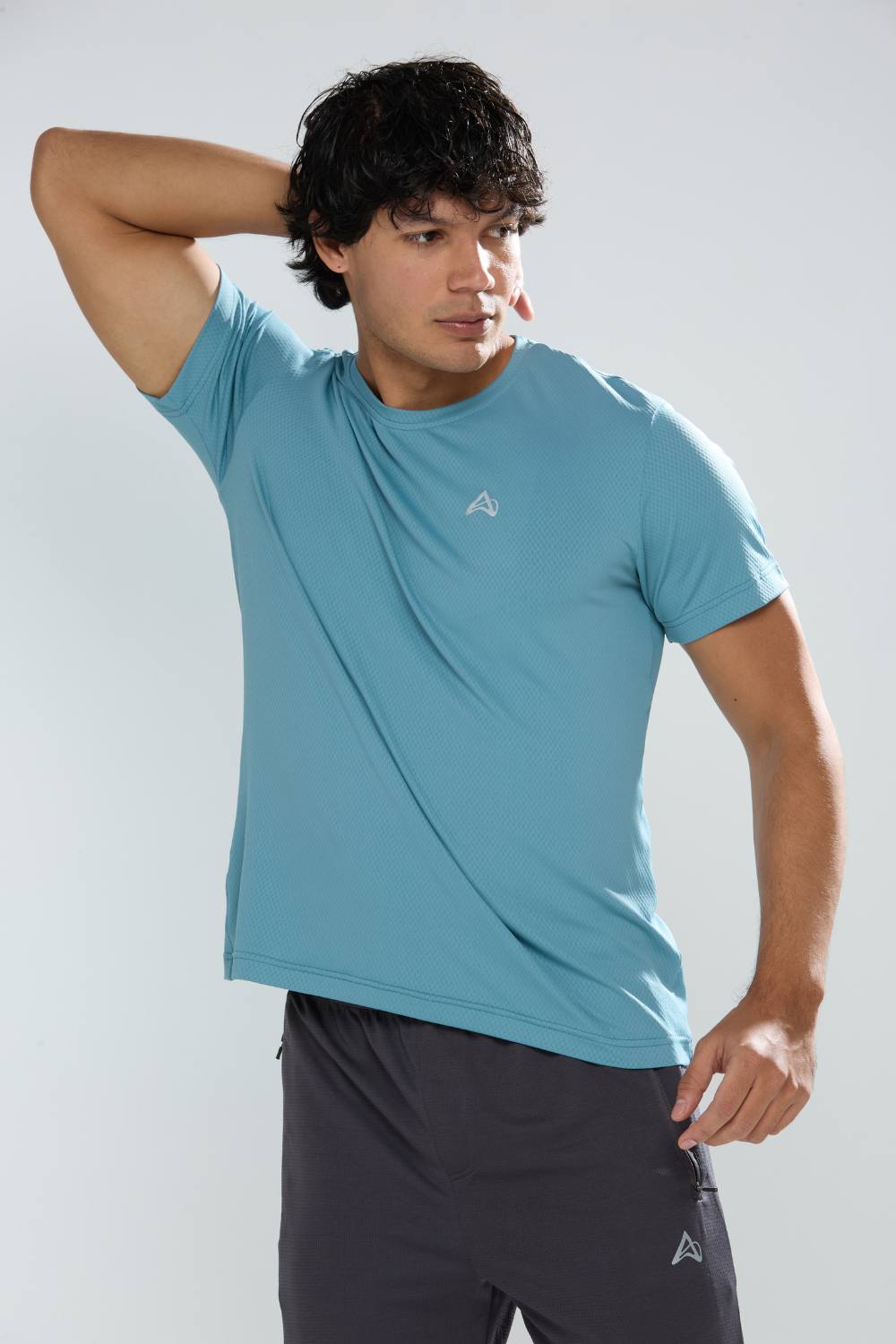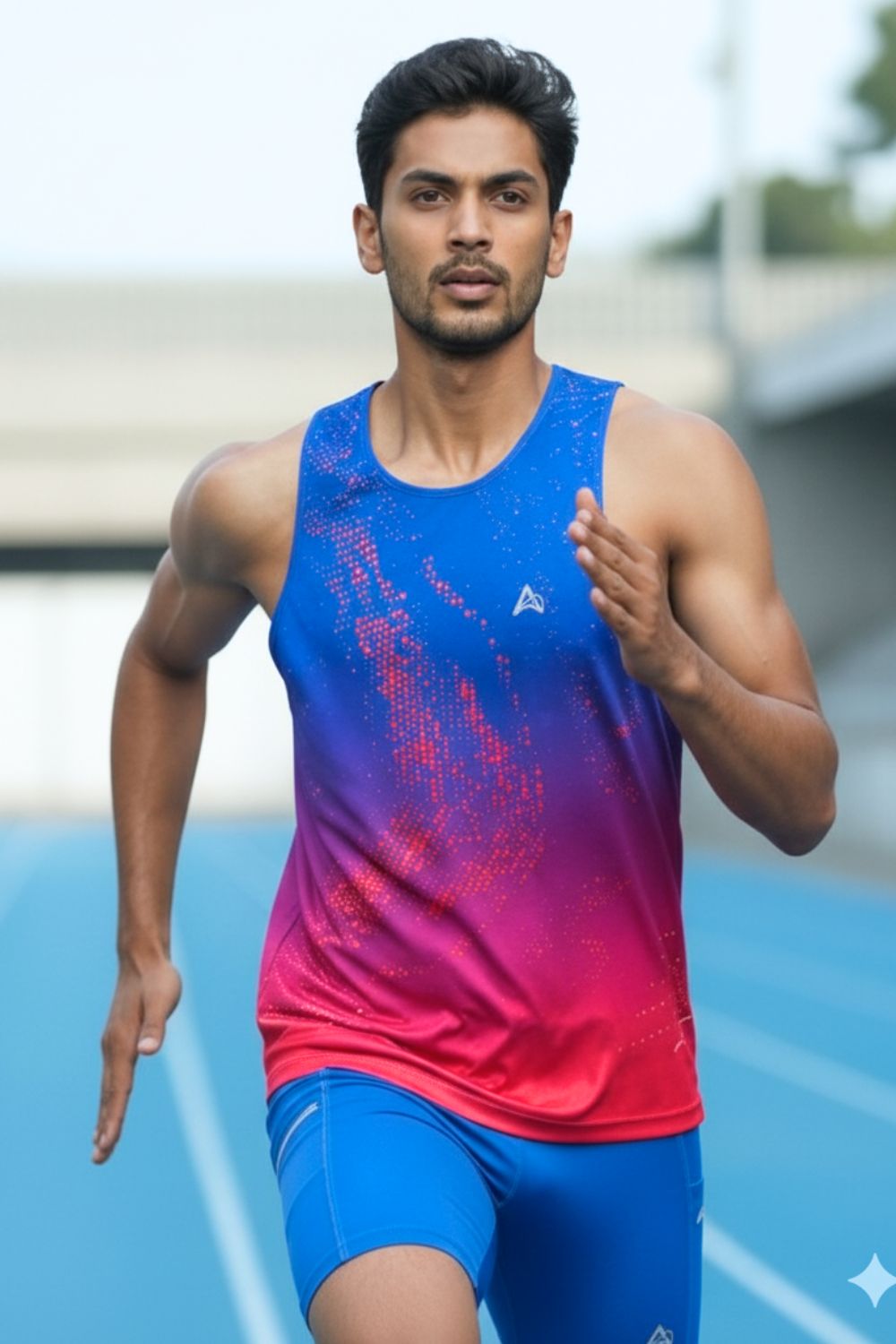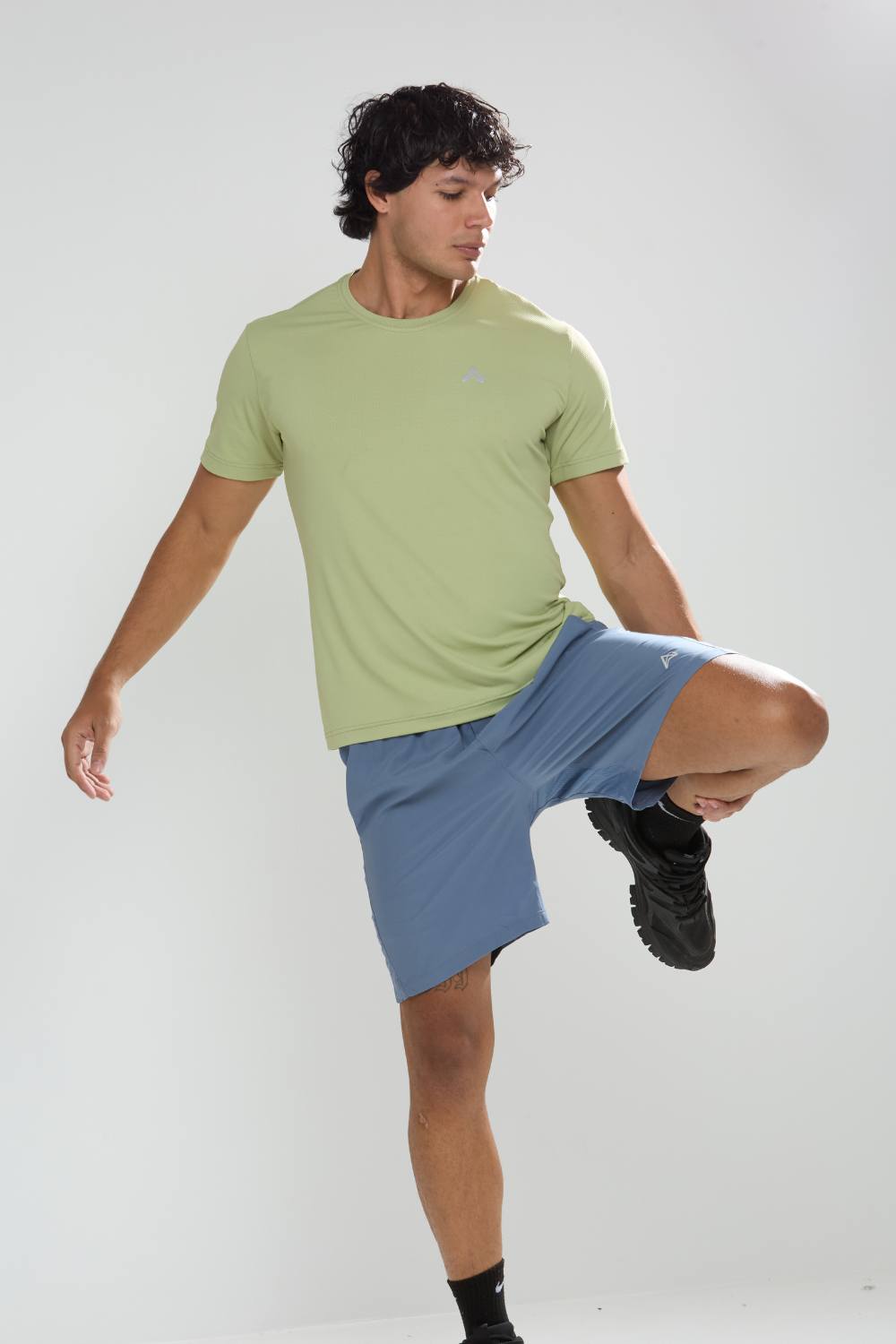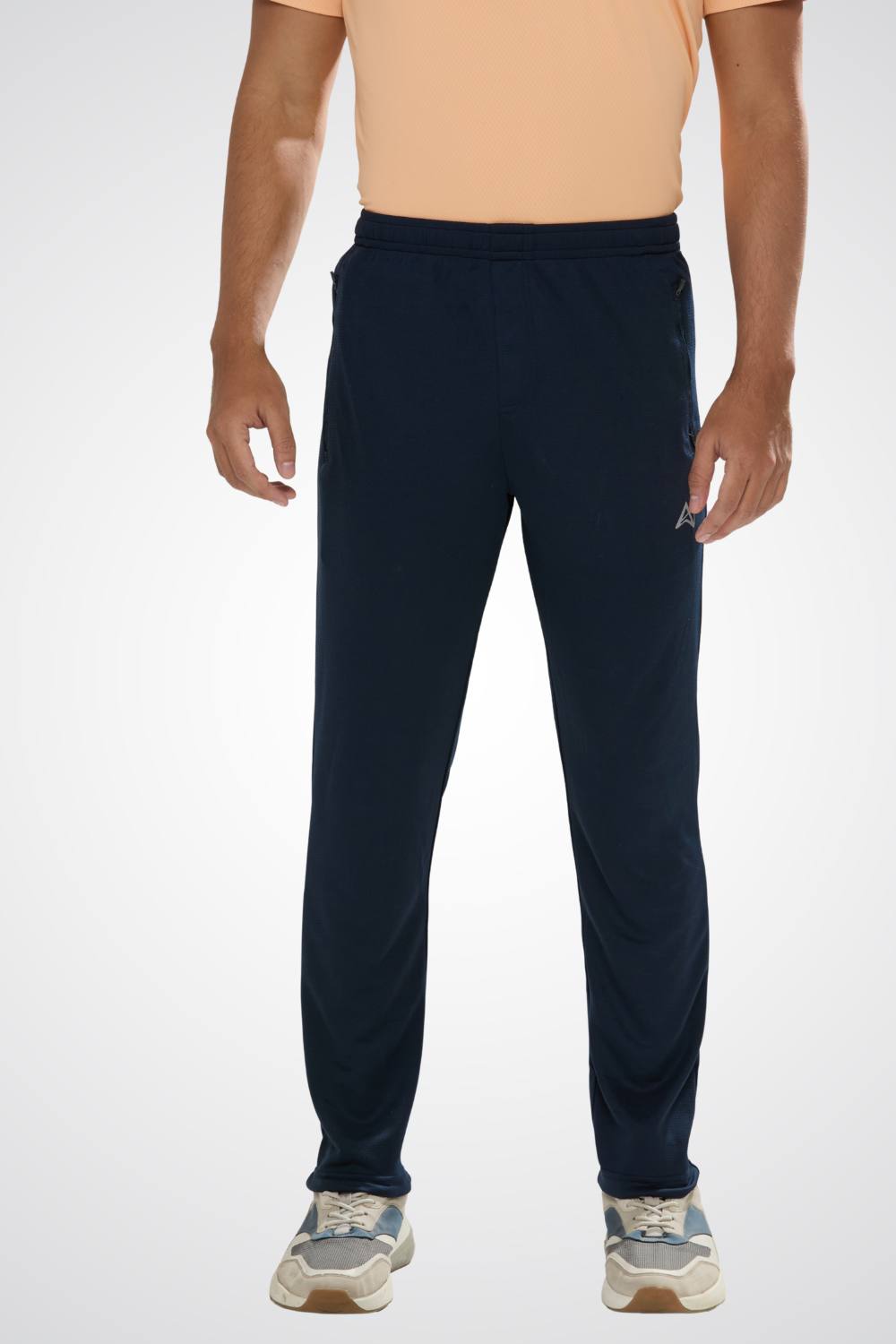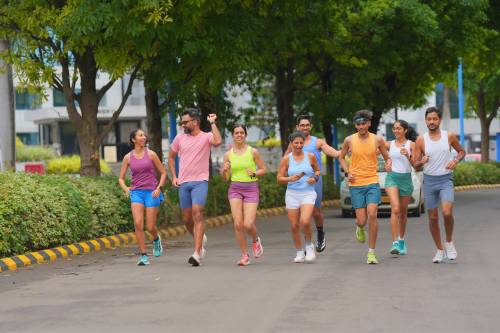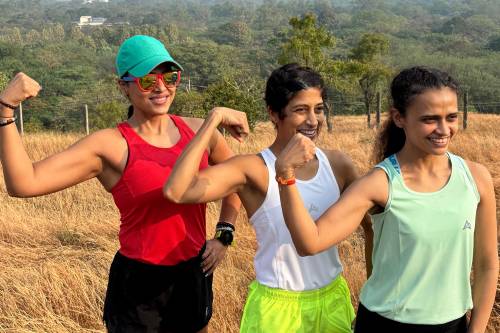Quick Listen:
The sun is just beginning to peek over the horizon in Bengaluru, casting a golden hue across Cubbon Park, where a symphony of footsteps echoes through the mist. Here, a diverse crowd gathers veteran marathoners pushing their limits, casual joggers seeking a moment of clarity, and novices tentatively testing their new budget-friendly sneakers. This scene, repeated in parks and streets across the country, captures the essence of a profound shift in India's fitness landscape. Running, once reserved for a select few, has evolved into a widespread cultural movement, propelled by an increasing demand for practical, affordable activewear that democratizes access to this invigorating pursuit. In cities from Mumbai's bustling Marine Drive to the serene paths of Delhi's Lodhi Gardens, millions are embracing the run, supported by gear that bridges the gap between ambition and affordability.
Tired of gear that slows you down? Chafing, soggy fabrics, and missing pockets kill your run's momentum. At Aguante, we're runners who get it. Our high-performance activewear features moisture-wicking fabrics, ergonomic designs, and smart storage to keep you focused. Shop Now!
A Run for Everyone
Running in India has transcended its origins as an elite sport or a privilege of the urban affluent. Today, it draws participants from all walks of life, reflecting a broader societal embrace of health and wellness. Recent data underscores this transformation: according to Strava's 2023 Year In Sport Trend Report, the country experienced a remarkable 59% year-on-year surge in running club activity, marking one of the highest growth rates globally for outdoor activities like running. This momentum has only intensified, with social media platforms overflowing with images of 5k achievements and marathon triumphs. Major events, such as the Mumbai Marathon attracting over 50,000 participants annually, and India's strong showing in international races like the Comrades Ultra Marathon, where the nation consistently ranks among the top three, highlight the depth of this enthusiasm.
Metro and Tier-1 cities including Mumbai, Bangalore, Pune, Hyderabad, and Delhi have become epicenters of this trend, teeming with community running groups that foster camaraderie and motivation. Yet, as this wave of recreational runners swells, a critical question emerges: is the supporting infrastructure, particularly performance gear, evolving at the same pace? The post-pandemic era has amplified this growth, with parks filling earlier and clubs proliferating, but many runners still grapple with gear that doesn't fully meet their needs.
This evolution is mirrored in the market dynamics. A comprehensive analysis from the IMARC Group reveals that the India running gear market achieved a value of USD 2.4 billion in 2024. Projections indicate it will expand to USD 4.8 billion by 2033, driven by a compound annual growth rate of 7.71% over the 2025-2033 period. Key factors fueling this expansion include heightened health consciousness among the population, increased engagement in fitness routines, rapid urbanization, rising disposable incomes, the rising appeal of recreational running, the spread of marathons and neighborhood races, endorsements from prominent athletes, and the robust growth of online retail channels. These elements collectively transform running gear from an optional indulgence into an essential component for a rapidly growing community of enthusiasts.
Democratizing the Track
Step inside a Decathlon outlet in a Tier-2 locale like Jaipur or Kochi, and the shelves tell a story of inclusivity. Rows of running shorts, breathable tees that wick away moisture, and beginner-friendly shoes are priced to accommodate everyday budgets. These offerings steer clear of the premium labels sported by international elites, focusing instead on functionality tailored to India's varied runner profiles from those embarking on their inaugural 5k to others gearing up for half-marathons without breaking the bank. Domestic brands are rising to the occasion, delivering products that match global standards in performance while remaining significantly more affordable.
Consider the journey of a typical runner in Lucknow, who begins with modest ₹1,000 shoes and a simple polyester shirt from a local manufacturer. As their commitment deepens over time, they upgrade to more advanced options featuring enhanced sweat management and superior support, all while staying within reasonable costs. Such narratives are commonplace in India's Tier-2 and Tier-3 urban areas, where cost-effective activewear is breaking down barriers and inviting broader participation that premium imports might otherwise exclude. Retail approaches, exemplified by chains like Decathlon, play a vital role by providing extensive selections that serve novices and experts alike.
Running communities further propel this accessibility. In Pune, organizations such as the Pune Running Club extend beyond mere group runs at dawn; they disseminate advice on economical gear suited to the region's sticky, dust-laden environment. Digital platforms amplify these efforts, with Instagram videos and X updates highlighting value-driven choices that maintain high standards. Online marketplaces, ranging from global giants like Amazon to indigenous e-commerce sites, have revolutionized availability, ensuring that quality gear reaches even the most remote aspiring runners and boosting both knowledge and adoption in underserved regions.
Challenges on the Course
Despite these advances, the path to widespread affordable performance apparel is fraught with obstacles. A lingering bias positions budget options as subpar, prompting some runners to chase premium brands for their perceived prestige. Longevity poses another issue: lower-priced items may falter under India's extreme weather patterns, from rain-drenched paths during monsoons to blistering heat on summer routes. Homegrown labels contend with formidable rivalry from international behemoths, which leverage superior advertising and brand allure to maintain dominance.
Awareness remains a significant barrier as well. Enthusiastic beginners, caught up in the thrill of a community 10k, often opt for basic cotton attire over specialized equipment, potentially leading to unease or harm. As Manoj Thakur, a marathoner and co-founder of the brand Aguante, observes, “You either end up overpaying or compromising on gear that wasn't tested for Indian sweat and sun.” Imported mid-premium products frequently fall short, with sizing and synthetic materials ill-suited to local conditions. Building confidence is essential; persuading a newcomer in a Tier-3 town to choose a ₹2,000 pair of Indian-crafted running shoes over a cheap imitation demands targeted education. Brands are responding through community involvement, such as funding local events, collaborating with clubs, or securing athlete backing to establish trust. Nonetheless, the core dilemma persists: achieving equilibrium between affordability, efficacy, and durability in a market as multifaceted as India's.
Opportunities in Every Stride
The landscape brims with potential, matching the expansiveness of the market. Economical gear is paving the way in lesser-developed cities, where running emerges as an economical route to fitness. Indigenous brands are solidifying their presence by engaging with local networks, backing competitions, or adopting direct-to-consumer strategies that minimize expenses without sacrificing standards. For instance, Aguante, established in 2018 and recently refined for online sales, crafts apparel attuned to India's climate, movement preferences, and physiques, drawing from authentic experiences in Pune's challenging conditions.
The IMARC analysis delineates the market's breadth, encompassing running footwear (which commands the largest portion), apparel, accessories, and fitness trackers, with divisions by gender male (leading the segment), female, and unisex and distributed via specialty sports outlets (the primary channel), supermarkets, department stores, online avenues, and others. Regionally, it spans North, South, East, and West and Central India, with the latter holding sway. This segmentation signals a sector ready for equitable advancement. Broader insights from the sports apparel arena, valued at USD 673.34 million in 2023 and anticipated to reach USD 1,926.10 million by 2030 at a 16.2% CAGR, underscore the sharp ascent in performance wear demand.
E-commerce stands out as a transformative force. By eliminating conventional retail overheads, it enables superior products at competitive prices, extending to isolated locales. This reach not only spurs sales but cultivates a fitter society, with impacts extending far beyond commerce. Envision a young resident of Bhopal, motivated by a nearby running collective, acquiring her initial set of specialized shoes digitally. This act transcends purchase it's a catalyst for personal change, potentially sparking a chain reaction within her circle.
Globally, the running club phenomenon continues to flourish, as evidenced by Strava's 2024 Year In Sport Trend Report, which reports a 59% rise in running club involvement and an 18% uptick in group runs of 10 or more participants. In India, this social dimension resonates deeply, aligning with the cultural emphasis on community and shared experiences.
A Finish Line in Sight
As India's running surge gains velocity, the significance of affordable activewear emerges as indispensable. It serves as the conduit linking desire to deed, empowering vast numbers to partake in a pursuit that blends individual wellness with collective bonds. Experts in the field view this as merely the commencement. With forthcoming advancements in eco-friendly, economical materials, native brands are positioned to secure a prominent niche in a domain historically led by foreign entities. The IMARC projection of a USD 4.8 billion market by 2033 highlights the promise, yet it's the personal accounts from Bengaluru's verdant parks to Surat's vibrant avenues that infuse this development with vitality.
Revisit that dawn in Cubbon Park: an elder in economical trainers matches strides with a student clad in a domestically produced moisture-managing shirt. Close by, women share post-run chuckles, their trackers glowing with accomplishment. This encapsulates India's fitness uprising, driven not by ostentatious emblems but by equipment that aligns with financial realities and the drive to persevere. As daylight spreads, it illuminates a country on the move, advancing one economical stride after another.
Frequently Asked Questions
What is driving India's running boom and how big is the market?
India's running market has experienced explosive growth, with a 59% year-on-year surge in running club activity according to Strava's 2023 report. The running gear market reached USD 2.4 billion in 2024 and is projected to grow to USD 4.8 billion by 2033, driven by increased health consciousness, urbanization, rising disposable incomes, and the popularity of marathons and community races.
How is affordable running gear making fitness accessible in India?
Budget-friendly activewear from brands like Decathlon and domestic manufacturers is democratizing running across India's Tier-2 and Tier-3 cities. Runners can start with basic gear costing around ₹1,000 for shoes and polyester shirts, then gradually upgrade to advanced moisture-wicking and support features while staying within reasonable budgets. This approach removes financial barriers that premium imported brands might create.
What challenges do Indian runners face when choosing affordable running gear?
Indian runners often struggle with durability issues as lower-priced gear may not withstand extreme weather conditions like monsoons and summer heat. There's also a perception bias that budget options are inferior, leading some to overpay for premium brands. Additionally, many beginners lack awareness about specialized gear benefits and may choose basic cotton clothing over performance apparel designed for India's climate and conditions.
Disclaimer: The above helpful resources content contains personal opinions and experiences. The information provided is for general knowledge and does not constitute professional advice.
You may also be interested in: How Indian Runners Build Endurance With Proper Gear
Tired of gear that slows you down? Chafing, soggy fabrics, and missing pockets kill your run's momentum. At Aguante, we're runners who get it. Our high-performance activewear features moisture-wicking fabrics, ergonomic designs, and smart storage to keep you focused. Shop Now!
Powered by flareAI.co





